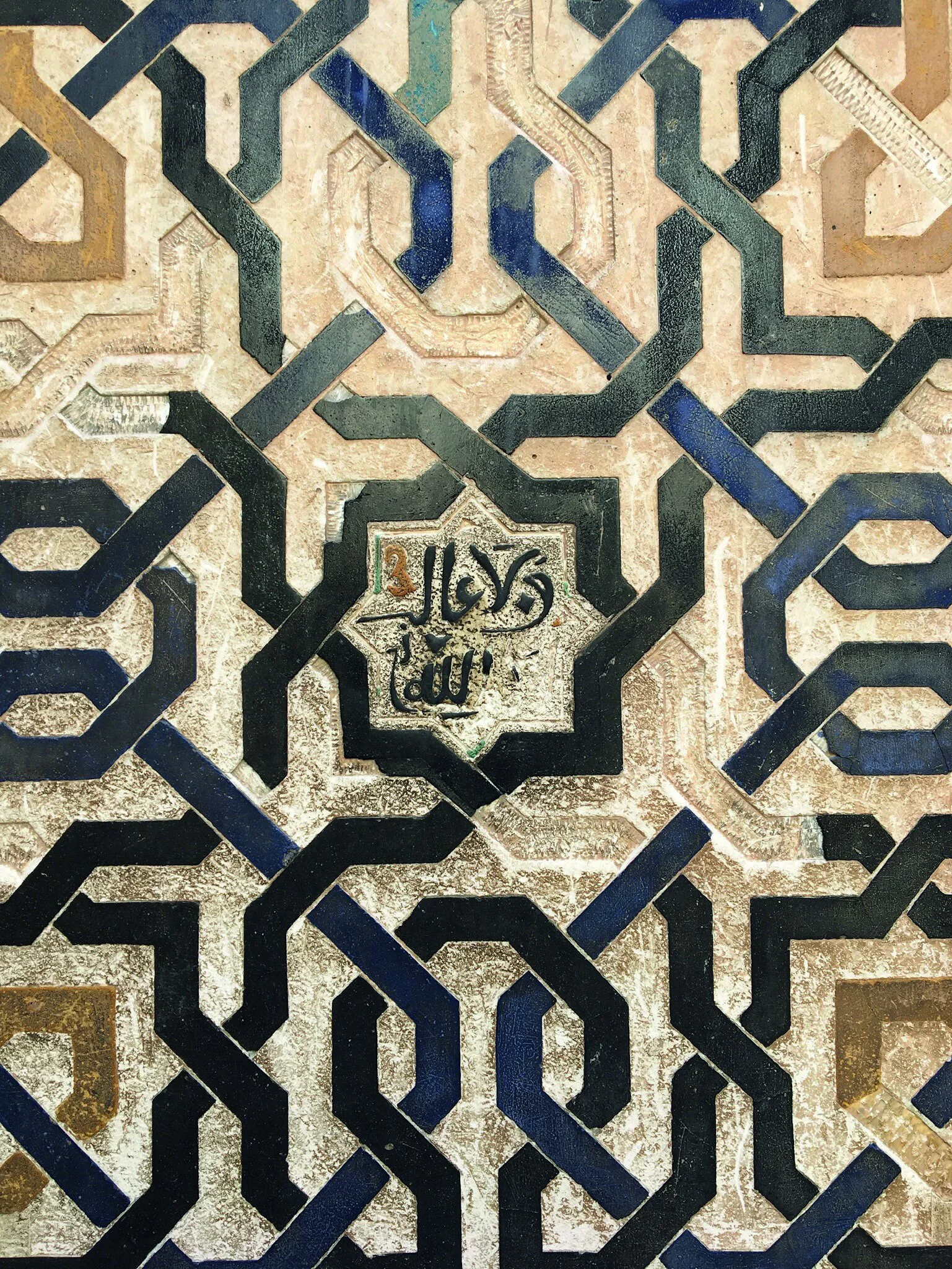Spain’s Moorish Past: Language and Etymology
By Natasha Dangoor
Under the Moorish rule in southern Spain, which lasted until 1492, Muslims, Christians and Jews coexisted peacefully.
In medieval Spain, peace and harmony reigned and Spanish heritage undeniably blossomed, much of it shaped by Moorish influence.
Traces of the Arabic language being used in Spain can be found in Andalusia’s famous landmarks. The beautiful calligraphy displayed throughout the Alhambra, its stunning grace in the Mezquita-Catedral de Córdoba and the intricately calculated designs of the Real Alcázar de Sevilla overwhelm us by its splendour but overshadow its linguistic significance.
Alhambra Palace, Granada. Photo Credit: Natasha Dangoor
From an etymological perspective, a considerable proportion of the Hispanic lexicon used today derives from Arabic. The Spanish term ojalá (hopefully) derives from the common Arabic word inshallah, meaning ‘G-d willing.’ In addition, much of the semantic field related to food stems from Arabic, including alcachofa (artichoke), aceituna (olive) and albaricoque (apricot). Spanish people today even refer to their lover as their ‘media naranja’ (meaning ‘half orange’) since a Moorish symbol for perfect love was an orange. The idea stems from platonic concepts about sister-souls uniting to form a sphere. Widely accepted as the national Spanish dish, paella, originally from Valencia, takes its signature ingredients from oriental roots with rice and saffron prevalent throughout the Middle East. Not only are these ingredients oriental but their names derive from Arabic as well. The Spanish word for rice, arroz, derives from the Arabic ruzz, and saffron, azafrán, stems from za’faran. Indeed, Arabic influence extends to Western culture more generally. Arabic has influenced English words such as 'algebra,' which comes from the Arabic al-jabr meaning 'the bringing together of broken parts.'
The influence of the Moors is not limited to linguistics. With Arabic being a means of cultural and literary preservation. Many Greek texts by renowned authors such as Plato and Aristotle were preserved by being translated into Arabic and then back into Greek.
Alhambra Palace, Granada. Photo Credit: Natasha Dangoor
The Moors can also be credited with introducing some of our most common concepts and everyday products into the Western sphere. Cotton was first grown on a large scale by the Moors in Spain and then spread to the rest of Europe, hence the Spanish term algodón deriving from the Arabic al-qutun. Meatballs, rice and spinach also came to Spain via the Moors, as did toothpaste, which originates in Baghdad. In the field of astrology and astronomy, many stars such as Aldebaran, Altair and Deneb have retained their Arabic names.
When in 1526 the Moors were forced to convert to Christianity and were banned from reading and writing in Arabic, their influence began to dissipate. Spain became westernised and Catholic Monarchs came to power.
Whilst the Moorish legacy is fortunately still present in Spain today, it is ever more important that the Arabic influence in etymology is acknowledged and appreciated. •

